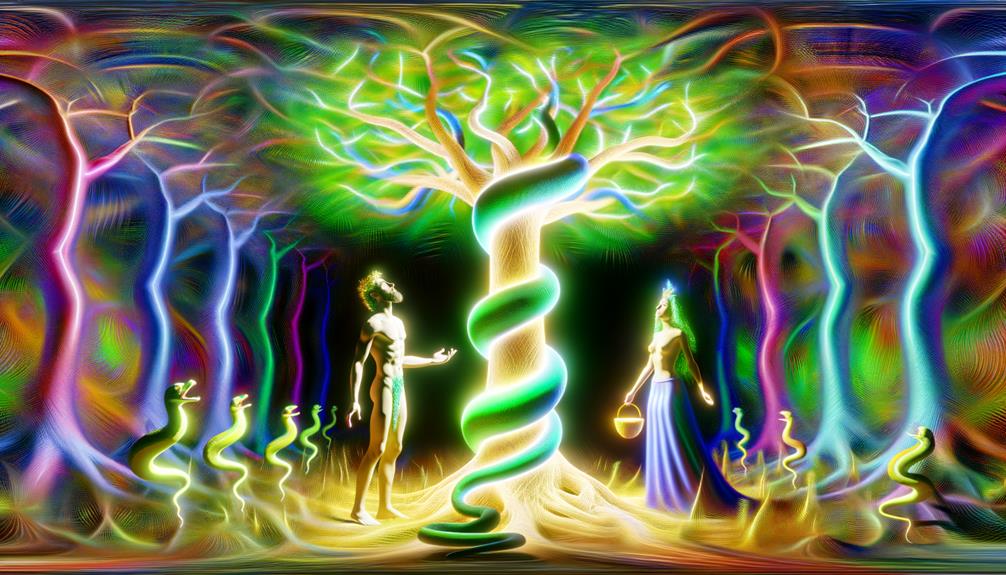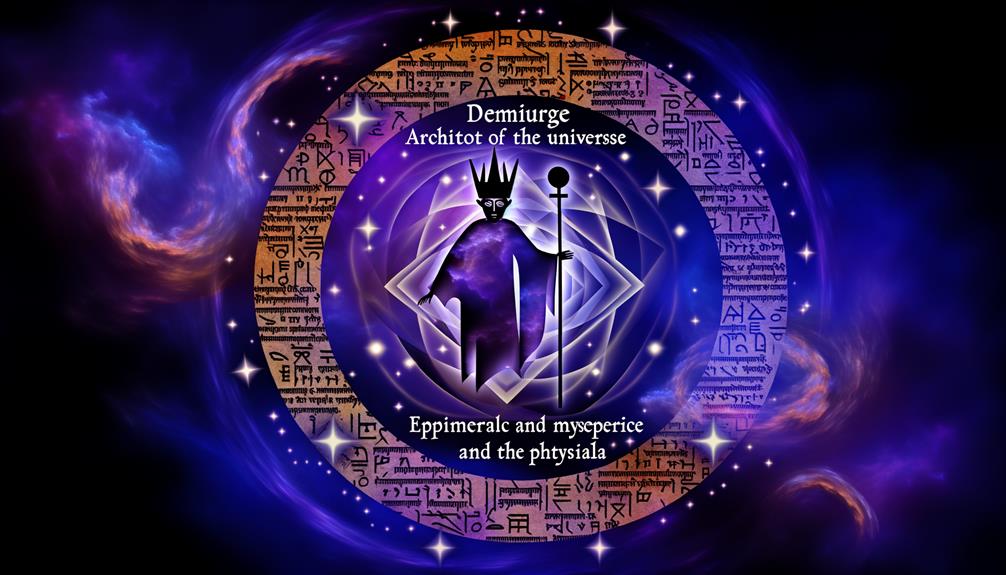Meaning of Gnosticism in the Bible: Heretical Teachings
Gnosticism in the Bible represents a complex, esoteric belief system characterized by a dualistic worldview and the pursuit of secret knowledge (gnosis). Emerging in the early Common Era, it influenced early Christian thought and scripture, often challenging orthodox teachings.
Gnostics viewed the material world as corrupt, created by a lesser deity known as the Demiurge, and emphasized personal spiritual enlightenment over institutional authority. Gnostic interpretations appear in texts like the Gospel of John and Pauline epistles, offering distinct perspectives on salvation and divine knowledge.
Further exploration reveals deeper insights into these intriguing theological nuances.

Biblical Meaning of Gnosticism: Origins, Beliefs, and Christian Response
| Aspect | Details |
|---|---|
| Origin of Term | From Greek gnosis, meaning “knowledge” |
| Direct Bible Mention | Not named explicitly, but ideas are addressed in New Testament letters |
| Core Beliefs | Salvation through secret knowledge, dualism (spirit good, matter evil) |
| Biblical Opposition | 1 John, Colossians, and pastoral epistles warn against false teachings |
| Christian Response | Affirmed the goodness of creation, incarnation of Christ, and open gospel |
Origins of Gnosticism

The origins of Gnosticism can be traced back to the early centuries of the Common Era, emerging as a complex and multifaceted religious movement that drew upon diverse philosophical, theological, and mystical traditions.
This esoteric system amalgamated elements from Hellenistic philosophy, particularly Platonism, Zoroastrian dualism, and various strands of early Christianity.
Scholarly consensus suggests that Gnostic thought began to crystallize in the first and second centuries CE, thriving in the intellectual hubs of Alexandria and the broader Eastern Mediterranean.
The movement’s syncretic nature allowed it to absorb and reinterpret doctrines from surrounding cultures, leading to a rich tapestry of beliefs and practices.
Gnosticism’s historical context underscores its intricate development and its enduring influence on subsequent religious and philosophical traditions.
Core Gnostic Beliefs

Building upon its diverse origins, Gnosticism is characterized by a set of core beliefs that revolve around the concepts of gnosis, dualism, and the distinction between the material and spiritual spheres.
These core tenets include:
- Gnosis: Gnostics emphasize a special, esoteric knowledge (gnosis) as the path to spiritual enlightenment and salvation.
- Dualism: A fundamental dualism exists within Gnostic thought, positing a stark contrast between the material world, often seen as corrupt or evil, and the spiritual domain, which is pure and divine.
- Material-Spiritual Distinction: The material world is typically viewed as a flawed creation by a lesser deity (Demiurge), whereas the true God belongs to the transcendent, immaterial sphere.
These beliefs form the bedrock of Gnostic philosophy and worldview.
Gnosticism and Early Christianity

Intertwined with the nascent stages of Christian development, Gnosticism emerged as a significant and often contentious influence, prompting theological debates and shaping early doctrinal formulations.
Gnostic sects, with their emphasis on esoteric knowledge and dualistic cosmology, challenged the burgeoning orthodoxy of the early Church.
Figures such as Irenaeus of Lyons and Tertullian vigorously opposed Gnostic teachings, deeming them heretical.
This opposition catalyzed the early Christian community to more clearly define its doctrines, particularly concerning the nature of Christ, salvation, and the material world.
The resultant creeds and councils were instrumental in establishing the theological boundaries of mainstream Christianity, underscoring the profound impact of Gnosticism on the development of early Christian thought and ecclesiastical structure.
Gnostic Texts and Scriptures

The examination of Gnostic texts, such as the Nag Hammadi library, reveals a rich collection of writings that provide insight into the diverse theological perspectives within early Gnosticism.
These texts, including the Gospel of Thomas and the Gospel of Mary, offer alternative interpretations of Christian scripture and illuminate the esoteric knowledge that Gnostics believed was essential for spiritual enlightenment.
Key Gnostic Texts
Among the most significant Gnostic texts, the Nag Hammadi library, discovered in Egypt in 1945, stands as a paramount collection of writings offering profound insights into Gnostic beliefs and practices. This collection includes pivotal texts that illuminate Gnostic cosmology, spirituality, and theology.
Notable works from this library include:
- The Gospel of Thomas: A collection of sayings attributed to Jesus, emphasizing direct, mystical knowledge.
- The Apocryphon of John: An essential text detailing Gnostic creation myths and the nature of divine beings.
- The Gospel of Philip: Explores themes of sacramental theology and the nature of the divine union.
These texts are invaluable for understanding the intricate and esoteric dimensions of Gnostic thought.
Gnostic Scripture Interpretation
Examining the interpretive approaches to Gnostic scriptures reveals a complex interplay between esoteric symbolism and theological doctrines that diverge considerably from orthodox Christian teachings.
Gnostic texts, such as the Nag Hammadi library, present a cosmology that emphasizes direct, mystical knowledge (gnosis) over faith or clerical authority. These scriptures often feature dualistic themes, portraying a stark contrast between the material world and the divine domain.
The exegesis of such texts requires an understanding of their metaphysical frameworks, which frequently involve intricate mythological narratives and allegorical content. Scholars assert that Gnostic interpretations aim to uncover hidden spiritual truths, often suggesting that salvation is an inward, personal journey rather than a communal or ecclesiastical experience.
Interpretations of Genesis

In examining the interpretations of Genesis through a Gnostic lens, scholars often emphasize the themes of creation and divine knowledge, viewing the serpent as a symbol of enlightenment rather than deceit.
This perspective contrasts sharply with orthodox interpretations, highlighting the dualistic nature of the narrative—where the material world is seen as flawed and the spiritual domain as pure.
Such readings underscore the complex interplay between good and evil, knowledge and ignorance, as foundational elements in Gnostic thought.
Creation and Divine Knowledge
Various interpretations of Genesis within Gnostic traditions offer a profound divergence from orthodox Christian views, particularly concerning the nature of creation and the acquisition of divine knowledge.
Gnosticism posits that the material world, rather than being a divine creation, is the work of a lesser deity, often referred to as the Demiurge. This belief fundamentally alters the perception of Genesis and introduces alternative theological concepts:
- Dualism: The sharp dichotomy between the spiritual and material domains.
- Divine Spark: The inherent divine essence within each individual, obscured by material existence.
- Esoteric Knowledge: Salvation is achieved through gnosis—an intimate, mystical understanding of divine truths, rather than faith alone.
These elements collectively underscore the unique Gnostic perspective on divine knowledge and creation.
Serpent Symbolism Explored
Within the Gnostic interpretation of Genesis, the serpent is often revered as a liberator and bringer of enlightenment, in stark contrast to its traditional portrayal as a deceiver. Gnostics view the serpent as a symbol of wisdom, providing humanity with the knowledge necessary to transcend material limitations. This perspective aligns with the Gnostic emphasis on esoteric knowledge (gnosis) as the path to spiritual awakening.
| Traditional Interpretation | Gnostic Interpretation | Implications |
|---|---|---|
| Deceiver | Liberator | Re-evaluates moral dichotomies in Genesis |
| Cause of Fall | Bringer of Enlightenment | Encourages pursuit of knowledge |
| Symbol of Evil | Symbol of Wisdom | Challenges conventional theological views |
This reconceptualization underscores a radical departure from orthodox Christian exegesis.
Dualism in Genesis
The Gnostic interpretation of Genesis introduces a profound dualism, distinguishing between the material world created by a lesser deity and the transcendent sphere of divine fullness. This reading challenges traditional Judeo-Christian views by positing that:
- The Demiurge: A subordinate creator, often identified with the God of the Old Covenant, forms the flawed physical domain.
- Sophia’s Role: The figure of Sophia, representing divine wisdom, inadvertently contributes to the creation of the material world, thereby introducing imperfection.
- Divine Spark: Humans possess a divine spark trapped within their physical bodies, urging a return to the Pleroma, or fullness of the divine.
These elements underscore a cosmological dualism, emphasizing the stark contrast between the corrupted material existence and the pure spiritual reality.
The Concept of the Demiurge

Central to Gnostic cosmology, the concept of the Demiurge refers to a subordinate deity responsible for the creation of the material world, often depicted as ignorant or malevolent in contrast to the transcendent true God.
In Gnostic texts, the Demiurge is frequently identified with the God of the Old Scripture, embodying flawed creation and the entrapment of divine sparks within physical forms. This figure creates a cosmos filled with imperfection and suffering, which stands in stark opposition to the divine Pleroma, or fullness of the true God.
| Aspect | Demiurge |
|---|---|
| Role | Creator of Material World |
| Nature | Ignorant/Malevolent |
| Relationship to True God | Subordinate/Contrary |
| Depiction in Gnostic Texts | Old Scripture God |
This conceptual framework underpins much of Gnostic soteriology and cosmological discourse.
Salvation in Gnostic Thought

Understanding the role of the Demiurge sets the stage for exploring the Gnostic concept of salvation, which revolves around the soul’s liberation from the material universe and its return to the divine Pleroma.
In Gnostic thought, salvation entails the awakening of gnosis, or esoteric knowledge, that enables the soul to transcend the corrupt material domain orchestrated by the Demiurge. This process involves:
- Recognition of the True Self: Realizing one’s divine spark trapped within the physical body.
- Rejection of the Material World: Viewing the physical sphere as a deceptive construct.
- Reintegration with the Divine: Achieving unity with the Pleroma through spiritual enlightenment.
These elements underscore a profound dualism and a yearning for a return to a pre-material, divine state.
Influence on New Testament

Examining the influence of Gnostic thought on the New Scriptures reveals a complex interplay of theological ideas that both intersect and diverge with early Christian teachings.
Scholars have identified certain motifs and themes within the New Canon that may reflect Gnostic undercurrents, particularly in texts such as the Gospel of John and Pauline epistles. These elements include dualistic worldviews, emphasis on esoteric knowledge, and the concept of spiritual enlightenment.
| New Canon Text | Gnostic Theme | Scholarly Interpretation |
|---|---|---|
| Gospel of John | Dualism | Light vs. darkness metaphor |
| Pauline Epistles | Esoteric Knowledge | Hidden wisdom revealed to few |
| Revelation | Spiritual Enlightenment | Visionary experiences and insights |
These nuanced interactions suggest an early Christian engagement with Gnostic ideas, shaping theological discourse.
Gnostic Views of Jesus

Rooted in a distinct theological framework, Gnostic views of Jesus present him as a divine emissary imparting secret wisdom essential for spiritual liberation.
Unlike orthodox Christianity, Gnosticism characterizes Jesus not merely as a savior through his death and resurrection but as a revealer of hidden truths necessary for transcending the material world.
Key tenets include:
- Dualism: Jesus is often depicted as a spiritual being opposed to the material world’s corrupt nature.
- Esoteric Knowledge: Salvation is achieved through gnosis, or secret knowledge, revealed by Jesus.
- Docetism: Many Gnostic texts suggest Jesus only appeared to have a physical body, emphasizing his divine, incorporeal essence.
These perspectives underscore Gnosticism’s emphasis on inner enlightenment over external ritual.
Legacy of Gnosticism

The enduring influence of Gnosticism can be traced through its substantial impact on early Christian thought, medieval mysticism, and contemporary spiritual movements.
Gnosticism’s emphasis on esoteric knowledge and spiritual enlightenment has permeated various religious traditions, provoking theological debates and inspiring mystical practices. Its legacy is evident in the writings of early Church Fathers, the works of medieval mystics, and the philosophies underpinning modern spiritual explorations.
| Aspect | Description |
|---|---|
| Early Christian Thought | Influenced theological debates and heresies. |
| Medieval Mysticism | Inspired mystical and esoteric traditions. |
| Contemporary Movements | Echoes in New Age and spiritual practices. |
| Esoteric Knowledge | Central to Gnostic belief and its followers. |
| Spiritual Enlightenment | Pursued through inner revelation and wisdom. |
This table highlights key areas where Gnosticism’s legacy manifests, underscoring its enduring relevance.
Conclusion
To sum up, Gnosticism, a complex and multifaceted belief system, greatly impacted early Christian thought and the interpretation of biblical texts, particularly Genesis.
With its emphasis on esoteric knowledge and the dualistic nature of existence, Gnosticism provided an alternate lens through which to view salvation and the figure of Jesus.
As the saying goes, ‘knowledge is power,’ and in the case of Gnosticism, this ancient pursuit of hidden wisdom continues to influence theological and philosophical discourse to this day.






